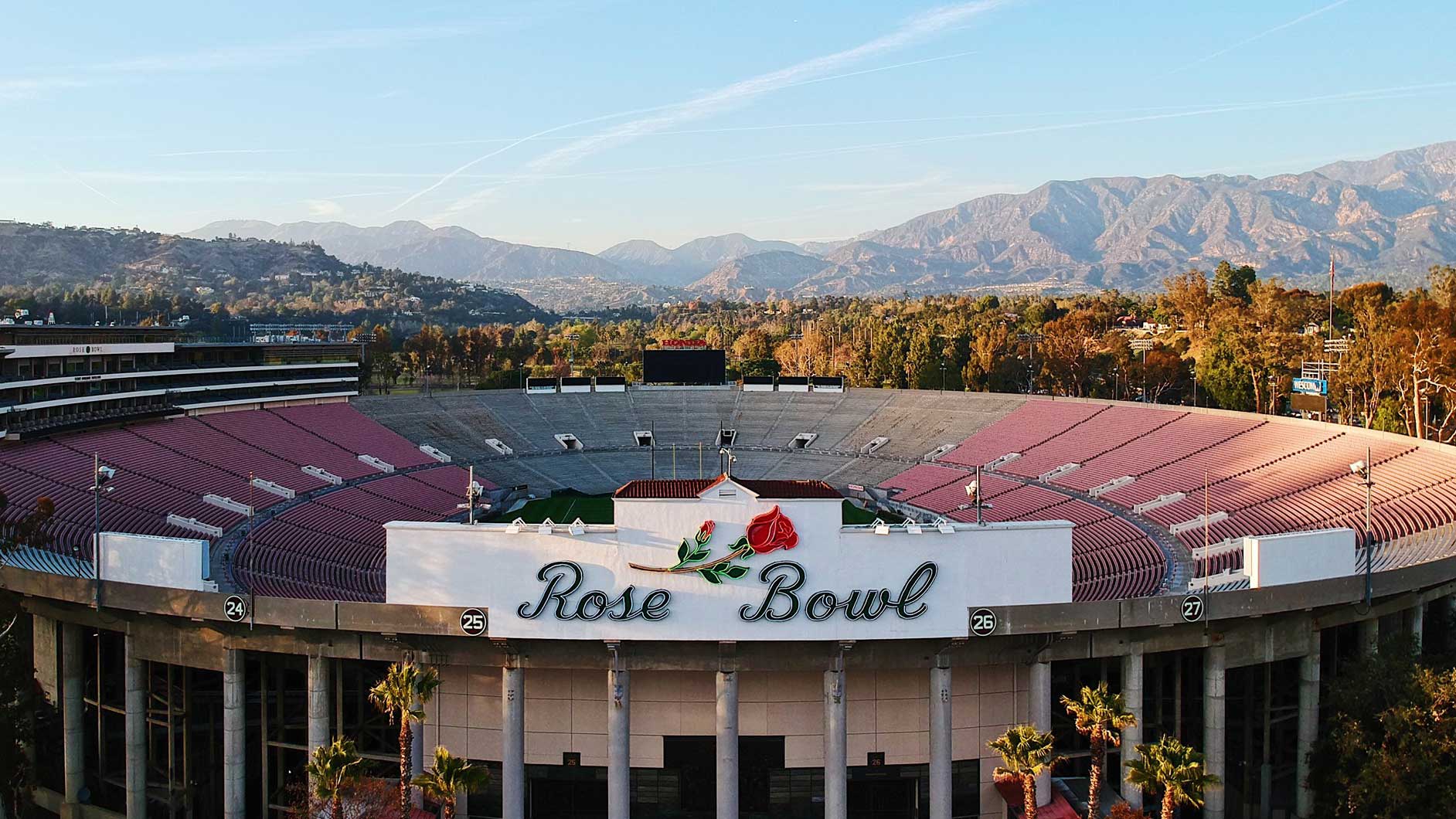A Deep Dive into the History of the Rose Bowl

Introduction: In the world of American sports, few events carry the weight of tradition, prestige, and history quite like the Rose Bowl. Known as the “Granddaddy of Them All,” this iconic college football game has etched its name into the annals of sports history since its inception. Let’s embark on a journey through time to explore the captivating saga of the Rose Bowl, from its humble beginnings to its status as an enduring symbol of athletic excellence.
Origins: The roots of the Rose Bowl stretch back to the turn of the 20th century, a time when Pasadena, California, sought to showcase its pleasant winter weather to the rest of the nation. In 1890, the Valley Hunt Club organized the first Tournament of Roses, a parade featuring beautiful floral floats. The success of this event led to the idea of incorporating a football game into the festivities as a means of attracting more visitors to the region.
Birth of a Tradition: On January 1, 1902, the inaugural Rose Bowl Game took place at Tournament Park in Pasadena. The matchup pitted the University of Michigan against Stanford University, with Michigan emerging victorious by a score of 49-0. Despite the lopsided result, the game captured the imagination of spectators and set the stage for future iterations of the event.
The Move to the Rose Bowl Stadium: In 1923, the Rose Bowl found its permanent home with the completion of the Rose Bowl Stadium. This majestic venue, with its iconic horseshoe design and stunning backdrop of the San Gabriel Mountains, provided an ideal setting for the annual gridiron showdown. Since then, the stadium has become synonymous with the Rose Bowl, hosting countless memorable moments over the years.
Expanding Influence: As the popularity of college football grew, so too did the stature of the Rose Bowl. In 1947, the game was broadcast nationwide for the first time, bringing its thrilling action to millions of viewers across the country. This exposure helped elevate the Rose Bowl to its status as one of the premier events in American sports.
Traditions and Pageantry: Beyond the gridiron, the Rose Bowl is renowned for its rich traditions and pageantry. The Tournament of Roses Parade, which precedes the game, features elaborately decorated floats, marching bands, and equestrian units, captivating audiences both in person and on television. These festivities add to the allure of the Rose Bowl experience, creating lasting memories for participants and spectators alike.
Iconic Moments: Over the decades, the Rose Bowl has played host to a myriad of iconic moments that have etched themselves into the collective consciousness of sports fans. From legendary performances by Heisman Trophy winners to thrilling come-from-behind victories, the game has provided no shortage of drama and excitement. Whether it’s the “Granddaddy of Them All” or a pivotal matchup in the College Football Playoff era, the Rose Bowl continues to deliver unforgettable moments year after year.
Legacy and Impact: Beyond its significance as a sporting event, the Rose Bowl holds a special place in the cultural fabric of America. It serves as a symbol of tradition, excellence, and community, bringing together people from all walks of life to celebrate the spirit of competition and camaraderie. From its humble beginnings as a local spectacle to its current status as a global phenomenon, the Rose Bowl stands as a testament to the enduring power of sport to unite and inspire.
Conclusion: As we reflect on the storied history of the Rose Bowl, it becomes clear that this venerable institution holds a unique place in the pantheon of American sports. From its humble origins to its status as a cultural touchstone, the Rose Bowl has captured the hearts and imaginations of generations of fans. As we eagerly anticipate each new edition of the game, we are reminded of the timeless appeal of this cherished tradition and the enduring legacy it represents.


 Facebook
Facebook
 X
X
 Pinterest
Pinterest
 Copy Link
Copy Link
